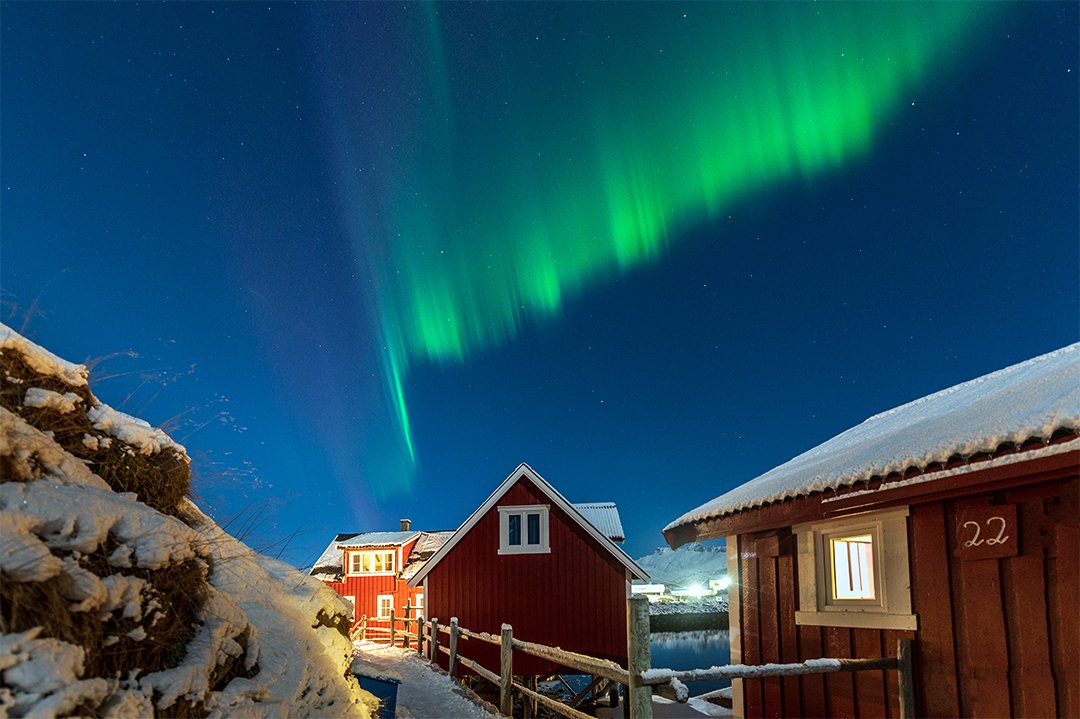Svinøya Rorbuer: A Glimpse into Norway's Seafaring Past and a Photographer's Dream Destination
If you're into travel and photography, Norway is a country that should be high on your list of must-visit destinations. And if you're interested in experiencing the country's rich history and cultural heritage, one of the best places to start is the Lofoten Islands. In particular, Svinøya Rorbuer offers a unique and authentic glimpse into Norway's seafaring past.
Rorbuer are traditional Norwegian fishing huts, typically built on stilts over the water. They were originally used as temporary housing for fishermen during the cod-fishing season, which runs from January to April. The fishermen would travel from all over Norway to the Lofoten Islands to take part in the "Lofotfisket" (Lofoten Fishery) – a centuries-old tradition that has helped to shape the culture and identity of the region.
The origin of rorbuer can be traced back to the Viking era, when the seafaring people of Norway needed a place to rest and repair their boats during their long voyages. Over time, these shelters evolved into the sturdy, functional huts that we see today. They were typically made from timber and had turf roofs, which helped to keep the heat in during the cold winter months.
Svinøya Rorbuer is one of the most picturesque and well-preserved rorbuer settlements in Lofoten. The huts are located on the waterfront, with views of the stunning mountains and fjords that surround the island. The red-painted huts are beautifully maintained, with traditional interiors that are both cosy and functional.
The vibrant red colour of the rorbuer at Svinøya is not just for aesthetics, but has a practical purpose. The bright red colour made it easier for fishermen to locate their huts from a distance in the often-foggy conditions of the Lofoten Islands. The paint was made using a traditional recipe of cod liver oil, ochre and other natural ingredients, which was known to be durable and long-lasting. These red cabins were the ‘cheaper’ ones, and the orange were slightly more expensive. The cream of the crop were the white buildings, which used actual (expensive) white paint and were therefore owned by the higher society, such as the fishing management and land owners.
The Lofoten Islands have a long history of fishing, dating back to at least the 12th century when Viking settlers first arrived in the region. By the 1800s, the Lofoten Fishery had become one of the most important industries in Norway, with thousands of fishermen travelling from all over the country to participate in the seasonal cod fishing. The fish were typically caught using traditional methods, such as line fishing and nets, and were then cleaned, salted and dried on wooden racks known as "hjell". The dried fish were then exported all over Europe, where they were highly valued as a source of protein. The fishing industry in Lofoten played a significant role in shaping the culture and economy of the region, and is still an important part of the local identity today.
One of the interesting historic facts about Svinøya Rorbuer is that it was once home to one of Norway's most famous artists, Gunnar Berg. Berg was a painter who spent many years living and working in Lofoten, where he drew inspiration from the dramatic landscapes and seascapes. Today, the Gunnar Berg Foundation has a gallery in Svinøya Rorbuer, which showcases some of his most iconic works.
Another unique feature of Svinøya Rorbuer is its restaurant, which serves up some of the best seafood in Lofoten. The chefs use fresh, locally sourced ingredients to create traditional Norwegian dishes with a modern twist. And the best part? You can enjoy your meal while looking out over the harbour, with the mountains and sea as your backdrop.
If you're interested in photography, Svinøya Rorbuer is a dream location. The light in Lofoten is constantly changing, creating a stunning array of colours and textures that are perfect for capturing on camera. Whether you're shooting landscapes, seascapes, or wildlife, there's always something new and exciting to discover.
So if you're planning a trip to Norway and want to experience the country's rich history and cultural heritage, be sure to add Svinøya Rorbuer to your itinerary. This unique and authentic settlement offers a glimpse into Norway's seafaring past, as well as some of the best seafood and scenery in Lofoten. And for photography enthusiasts, it's an absolute dream location that will leave you with memories and images to treasure for a lifetime. Svinøya Rorbuer are hosting me for my upcoming Lofoten Islands Viking Photography Workshop series, and I can’t wait! There are only a limited number of spots available and I’d love you to join me.
Much love
Dave




